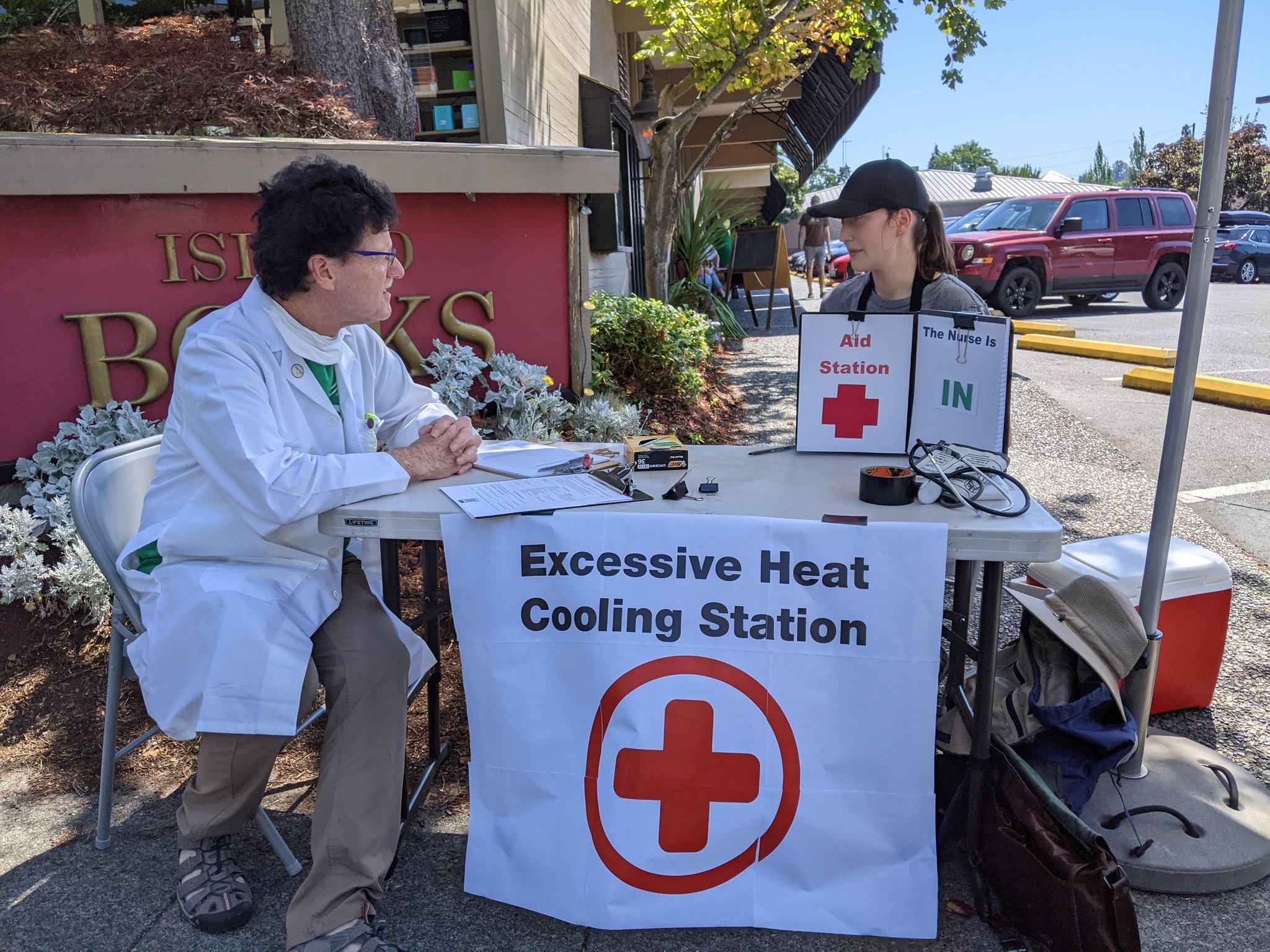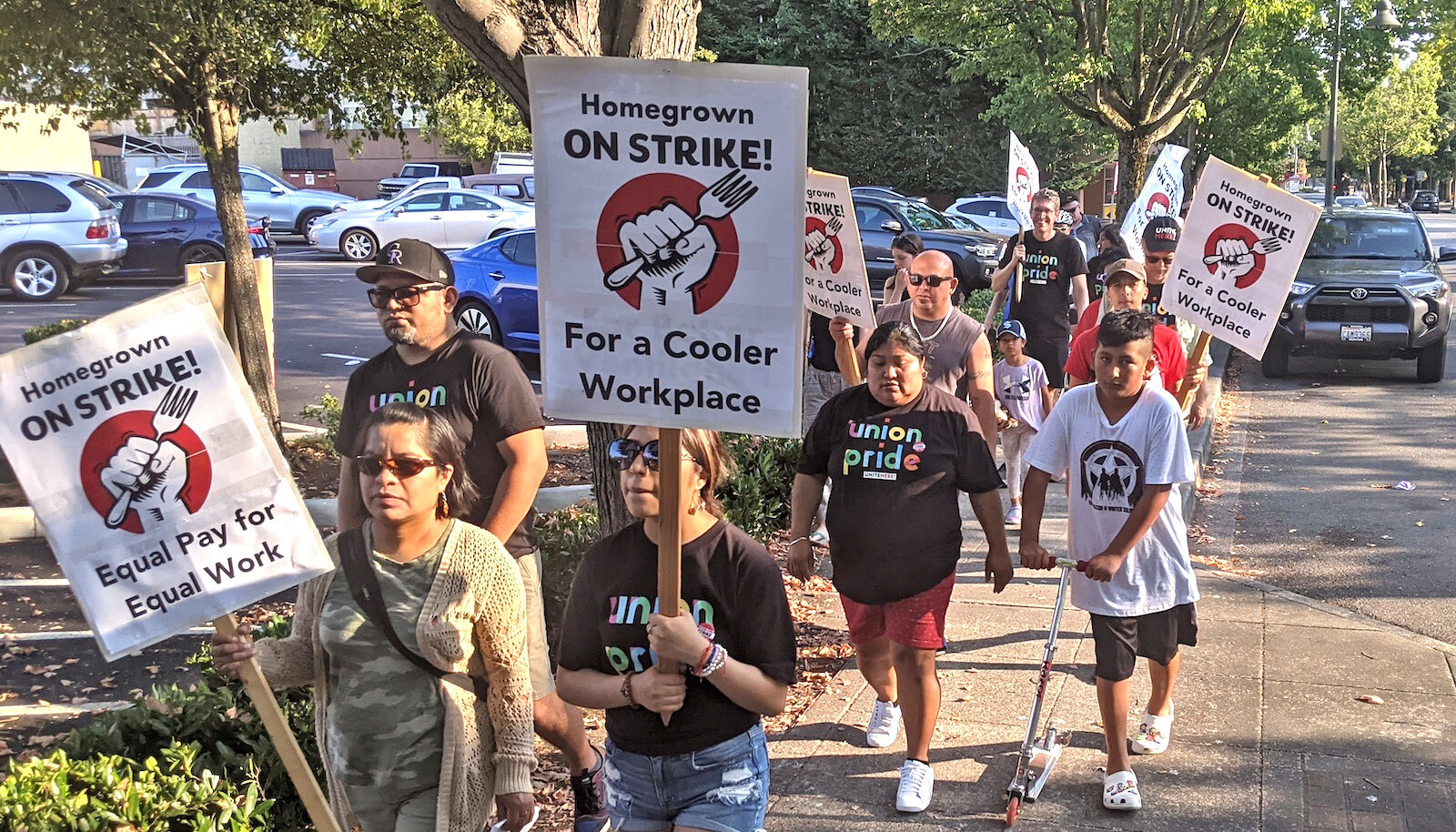Last month, Oscar Hernández couldn’t sleep. The cook, who worked at a restaurant located inside of a Las Vegas casino, had found that after coming home from his shifts, his body would not properly cool down.
The air conditioning at work had been broken for about four months. Hernández worked eight-hour shifts during the restaurant’s brunch service, whipping up eggs, waffles, and fried chicken. He spent hours in front of a scaldingly hot grill — an older model that only ran at extremely high temperatures. Most often, his station on the line was in a corner, and it seemed as if all of the other heat sources in the kitchen — the gas burners, the four deep-fryers, the waffle iron — converged right there. Summer had not officially started, but Las Vegas was already seeing above-normal temperatures in May, sometimes reaching triple digits. The fans that the owners put in the kitchen were not strong enough to cool down the space.
Extreme heat is nothing new to Hernández, who lives in Nevada and has worked in the restaurant industry for 22 years. But the situation at this non-union restaurant, a rarity on the Las Vegas strip, was becoming untenable. Sometimes it got so hot in the kitchen that Hernández preferred the heat outside, where at least there was a breeze. He had a headache that would not go away, and at home he sometimes found himself getting irritated with his children over small things.
“The heat inside a restaurant is different — it gets into your body,” Hernández said in an interview in Spanish. He knew doctors recommend getting adequate rest to help recover from overheating, but now he could not do even that. So he quit.
“I’m the only one who works in my family,” he said. “So I decided that I’d rather look for another job, one where I can work comfortably and then hopefully, I’ll be able to get some sleep.” He has since found a job at a different restaurant.
Stories of working under heat stress are common in the restaurant and food service industry, where back-of-house workers stationed “on the line” must stay on their feet for hours, cooking and prepping next to hot stoves, ovens, fryers, and more. But increasingly, this workforce must contend with an additional source of heat exposure: the record-breaking summer temperatures and heat waves taking place outside the kitchen. The confluence of indoor and outdoor heat has inspired some workers to unionize and fight for stronger safeguards at work. Employees at a Seattle-based sandwich chain recently secured historic protections against extreme heat in their first union contract. Labor organizers say they expect more food service workers to organize and bargain around heat in the years to come.
Of all the climate issues that workers are facing on the job, “heat, I would say, is one of the most common right now,” said Yana Kalmyka, a volunteer organizer for the Emergency Workplace Organizing Committee, a grassroots effort started out of the pandemic to support worker organizing.
Scientists now largely agree that all heat waves are made more likely or stronger because of climate change. That’s thanks to a relatively new but growing field called attribution science, which allows researchers to determine how much more likely extreme weather events are made by global warming. A report published last month found that in the last year, human-caused climate change led to a global average of 26 additional days of extreme heat.
Food workers have long been on the front line of worsening global temperatures. Farmworkers in the U.S. are necessarily exposed to the elements, but lack federal regulations around heat exposure and safety. Delivery workers must also travel through extreme heat (and other weather events) to earn a living, and may not have adequate places of rest throughout the day.
Similarly, restaurant cooks and servers can often be subject to extremely high indoor temperatures — and depending on their workplace setup, outdoor temperatures can exacerbate that heat stress. The nature of restaurant work — where quick service is key and kitchens stay open even during global pandemics — means that workers are expected to show up for shifts even during historic heat, when their safety and that of their customers might be compromised.
Jason Flynn, a Chicago line cook who has worked in restaurants for many years, said that the fast-paced, high-pressure nature of commercial kitchens, where workplace injuries are often simply toughed out, means workers may feel as if working through excessive heat exposure is their only option. The result of that, he said, is that “people are going to pass out, have strokes, or other kinds of long-term heat-related issues, like blood pressure and heart problems.”
Women and people of color are disproportionately represented in certain restaurant roles. For example, Hispanic people are more likely to be staffed as dishwashers or cooks, according to an Economic Policy Institute report. Many are immigrants or undocumented, and may fear retaliation or losing work for speaking out about working conditions. These are “populations who already experienced heightened impacts of climate injustice at home in their community,” said Kalmyka. “And their growing exposure to extreme heat at work is just another dimension of how inequitable the impacts of the climate crisis are.”
There are a few ways that outdoor heat exacerbates indoor heat for restaurant workers. Tall windows in restaurants and cafes can let in a lot of heat on sunny days — as is the case at multiple locations of Homegrown, the Seattle-based sandwich chain that recently won heat protections after unionizing.
Some Homegrown locations, according to workers, are in older buildings that lack adequate climate control. Most are set up for counter service, meaning the workers take orders in the same area where they toast and prepare sandwiches. “We’re in this big old brick building,” said Zane Smith, a worker-organizer at Homegrown. “And we don’t have very good air conditioning, and we have an oven. So the whole building becomes this big brick oven.”
Smith, a Seattle native, said heat was one of the main issues workers were rallying around when they first started talking about forming a union. Despite working indoors, Homegrown workers say they have been feeling the impact of Seattle’s record-topping summer heat. The city, which has historically lacked air conditioning, faced record-shattering heat in 2021, with temperatures as high as 108 degrees F sending many to the hospital with heat-related illnesses. Attribution scientists said the unprecedented heat wave was made at least 150 times more likely by human-induced climate change.
“It’s always hotter inside than it is outside,” said Smith. “Every time it’s 80 degrees outside, it’s 85 in the store; when it’s 90, it’s 95 in the store.”

In what is likely an industry first, the workers at Homegrown won language in their union contract in March that could help with that. The workers fought for a clause that allows them to receive time-and-a-half pay when temperatures in the store reach 82 degrees Fahrenheit and double pay when store temperatures reach 86 degrees F. (According to the Occupational Safety and Health Administration, when a workplace reaches 77 degrees F, it becomes potentially unsafe for workers to engage in “strenuous work.”)
Emily Minkus, who has worked for Homegrown for nearly six years, said her colleagues shared stories about working through heat stress and illness during bargaining sessions with management.
“We have people who have passed out. We have people who have had asthma attacks,” said Minkus. “We have locations where people were taking breaks in walk-in” freezers.
She credits these testimonials with convincing management that workers were asking for heat pay not because “ideologically, it’s good for the world. We’re doing it because we need it.”
Homegrown workers unionized with Unite Here Local 8, which represents about 4,000 hospitality workers in Oregon and Washington state. Anita Seth, the president of Unite Here Local 8, said the goal of the Homegrown heat pay language is to “really incentivize the employer to update and improve their heat mitigation systems,” which could include repairing and maintaining AC but also installing shade coverings for windows. It seems to be working — Minkus reported that when the AC broke down at her store this spring, she and her colleagues received heat pay for three days straight. The following week, a technician arrived to repair the equipment.
Homegrown’s management didn’t reply to Grist’s request for comment.
Homegrown isn’t the only food chain where heat and faulty cooling systems have become a labor issue. Last summer, workers at a Starbucks located in Houston, Texas, went on strike over extreme heat in their store.
“We did not have a functioning air conditioner last summer, and we were forced to work in temperatures between 80 and 85 degrees,” Madelyne Austin, a Starbucks barista organizing with Starbucks Workers United, said in a statement. “Our managers had known the air conditioner wasn’t working correctly for months, but refused to listen to us when we begged them to fix it.”
The Starbucks union is currently bargaining with the coffee chain over a “foundational framework” that will help shape contracts at the store level. Austin said that workers are fighting for “universal safety standards” to mitigate extreme heat.
In response to a request for comment, Starbucks said the company is committed to ensuring worker and customer safety and routined review conditions in stores. “Where issues in store jeopardize the well-being of our partners,” the company said in a statement, “we have been working with deep care and urgency to take action.” (Starbucks refers to all employees as “partners.”)
The Starbucks story demonstrates how sometimes the quickest way restaurant workers can secure their own safety during a climate emergency is to shut down. Starbucks Workers United confirmed that after the Houston store employees walked out, their AC was repaired.
Homegrown workers also understand this well. In addition to their heat pay language, they won a clause in their contract that allows them to clock out due to extreme heat in their store without facing disciplinary action. Minkus and Smith say workers have already been taking advantage of this provision, and that staff members are prepared to simply close up for the day if it ever gets too hot.
Minkus called working in 88-degree heat next to a 600-degree oven “miserable.” “And so a lot of workers are leaving early. We had one location shut down early because everybody was just so, so hot.”
Smith says that when Homegrown workers first approached the bargaining table, they were fighting for better air conditioning. “That’s still what we want,” he added. “Heat pay is great, but we would actually like the workplace to be a reasonable, safe temperature year round.” Until then, workers at Homegrown know they’ll be paid extra for working through the heat; Smith says that since the contract went into effect in March, his store has received 10 or 15 days of heat pay.
Seth notes that extreme heat is increasingly impacting workers across industries, most immediately outdoor workers, and that heat has come up in other food service contract negotiations. For Kalmyka, the connection between climate change and labor organizing takes on even greater urgency when considering productivity demands on workers. “Across the service industry and many other industries, we see employers continually trying to squeeze their workers to produce more for less,” she said, adding that “as a result, workers are often forced to work more and faster under pretty dire levels of short staffing,” which can exacerbate the effects of heat stress.
As the labor movement continues to be impacted by the climate crisis, organizers like Kalmyka are hoping to help workers draw connections between their struggle and the planetary one. To her, the connection between worker exploitation and human-induced climate change is clear. “Both have the same root cause, which is putting profits ahead of people and the planet.”
This story has been updated.


